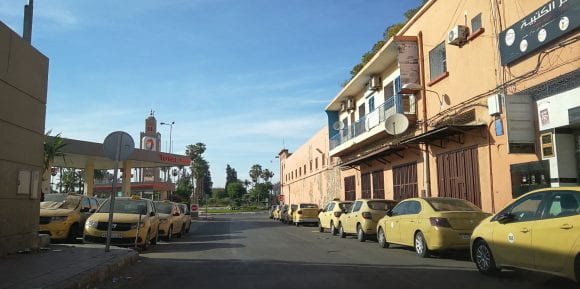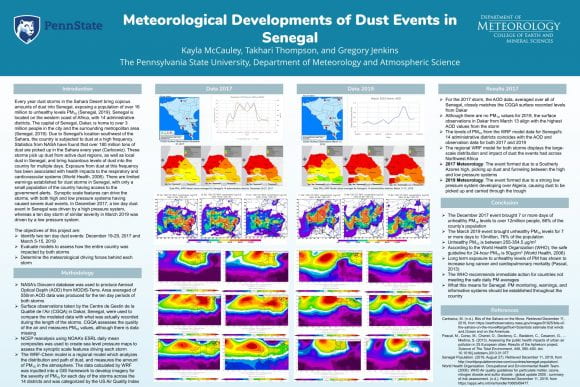IMAGE OF THE WEEK

Although Penn State’s University Park campus remains quiet, hopeful signs of spring are beginning to bloom. See a photo gallery of spring blooms.
GOOD NEWS
Lorraine Dowler has been awarded the 2020 Jan Monk Service Award from the AAG Feminist Geographies Specialty Group.
The EarthTalks seminar will be held at 4 p.m. Monday, April 20. David Yoxtheimer will discuss the science and technology of shale energy development, and how to combine research, policy and technology to mitigate the environmental issues while meeting society’s energy. Zoom at https://psu.zoom.us/j/594342606. The talk is free and open to the public.
April 22, 2020 will mark 50 years of Earth Day. In honor of the 50th Anniversary of Earth Day, The GREEN Program will be hosting a virtual panel series to catalyze dynamic conversations around sustainability topics.
CORONAVIRUS INFORMATION
AND RESOURCES
NEWS
In response to the growing coronavirus pandemic, orders from the state government and recommendations from global public health organizations, Penn State will hold its spring 2020 commencement ceremony via livestream on May 9. The virtual ceremony will recognize all Penn State undergraduate students and all graduate students in the Penn State Graduate School.
Penn State researchers interested in using computational resources to address the COVID-19 pandemic are encouraged to apply for support through the Institute for Computational and Data Sciences’ (ICDS) Explore Grant program.
From the esri ArcGIS Blog
The coronavirus (COVID-19) is causing many universities and colleges to virtualize their classes. Schools that have not considered or postponed a decision to virtualize their GIS classes using ArcGIS Pro and ArcMap are revaluating their options. Those that have experimented with virtualizing ArcGIS Pro are seriously considering how to expand their virtualized offering.
RECENTLY PUBLISHED
Book Review: Re-enchanting the World: Feminism and the Politics of the Commons
Jacklyn Weier
The AAG Review of Books
DOI: 10.1080/2325548X.2020.1722464
This edited collection by Italian feminist, scholar, and activist Silvia Federici features writings published in various venues over the course of her career. In essence, the collected writings trace the entanglement of capitalism, women’s reproductive work, the burgeoning debt crisis, and the commons. With a foreword by Peter Linebaugh, and publications from the 1980s to the present, Re-enchanting the World: Feminism and the Politics of the Commons offers a view of Federici’s previous work that argues for its continued importance and relevance in the world. Although Federici is most known for her book Caliban and the Witch: Women, the Body and Primitive Accumulation (Federici 2004), as well as her publications demonstrating the connections between sexuality and reproductive work, Re-enchanting the World offers a renewed perspective on some of the other key theories and ideologies Federici has delved into throughout her career. The inclusion and ordering of her previous publications successfully place her work among larger discussions concerning Marxist accumulation, the political importance of the commons, and the role of debt in capitalism and the creation of the proletariat.
Coming Out of the Foodshed: Phosphorus Cycles and the Many Scales of Local Food
Russell C. Hedberg II
Annals of the American Association of Geographers
DOI: 10.1080/24694452.2019.1630248
Systems of food production and provision face a set of complex and interdependent challenges to sustainably meet current and future nutrition needs and minimize the negative social and ecological consequences of modern agriculture. Food system localization, often in the context of specific initiatives like farmers’ markets, are frequently put forth as a promising strategy for establishing more just food systems and agroecological production that relies on regional resources and in situ ecological processes rather than agrichemical inputs. Despite a significant literature on local food, there remain critical omissions in geographic inquiry, particularly analyses of scale in regard to food system localization. This article uses scale as an analytical lens to examine phosphorus fertility on farms participating in a farmers’ market network in New York City. Through a synthesis of biogeochemical analysis, semistructured interviews, and nutrient network mapping, the work charts the complex and often contradictory interactions of material and discursive scales in local food systems. The lens of scale reveals multiple narratives of sustainability, indicating both the great potential for agroecological phosphorus management and significant structural problems that undermine the project of food system localization. These findings argue for a more expansive approach to localization that acknowledges a mosaic of overlapping scalar processes in food systems and that the sustainability promise of food system localization requires interconnected sustainabilities in multiple places and at multiple scales.
“The Care and Feeding of Power Structures”: Reconceptualizing Geospatial Intelligence through the Countermapping Efforts of the Student Nonviolent Coordinating Committee
Joshua F. J. Inwood & Derek H. Alderman
Annals of the American Association of Geographers
DOI: 10.1080/24694452.2019.1631747
This article advances three interrelated arguments. First, by focusing on the Student Nonviolent Coordinating Committee’s (SNCC) Research Department, an undertheorized chapter in the civil rights movement, we advance an expressly spatialized understanding of the African American freedom struggle. Second, by focusing on an SNCC-produced pamphlet titled The Care and Feeding of Power Structures, we advance a larger historical geography of geospatial agency and countermapping of racial capital within black civil rights struggles. SNCC’s research praxis, which we argue constitutes a radical geospatial intelligence project, recognizes that geographical methods, information, and analytical insights are not just the purview of experts but are a set of political tools and processes deployed by a wide range of groups. Our article develops a deeper understanding of the rich spatial practices underlying black geographies and the role of geospatial intelligence in a democratic society outside the military–industrial–academic complex.
Racial/ethnic segregation and health disparities: Future directions and opportunities.
Yang, T‐C, Park, K, Matthews, SA.
Sociology Compass
https://doi.org/10.1111/soc4.12794
Health researchers have investigated the association between racial segregation and racial health disparities with multilevel approaches. This study systematically reviews these multilevel studies and identifies broad trends and potential directions for future research on racial segregation and health disparities in the US. After searching databases including CINAHL and MEDLINE, we systematically reviewed 66 articles published between 2003 and 2019 and found four major gaps in racial/ethnic segregation and health disparities: (a) the concept of segregation was rarely operationalized at the neighborhood level, (b) except for the evenness and exposure dimension, other dimensions of segregation are overlooked, (c) little attention was paid to the segregation between whites and non‐black minorities, particularly Hispanics and Asians, and (d) mental health outcomes were largely absent. Future directions and opportunities include: First, other segregation dimensions should be explored. Second, the spatial scales for segregation measures should be clarified. Third, the theoretical frameworks for black and non‐black minorities should be tested. Fourth, mental health, substance use, and the use of mental health care should be examined. Fifth, the long‐term health effect of segregation has to be investigated, and finally, other competing explanations for why segregation matters at the neighborhood level should be answered.




